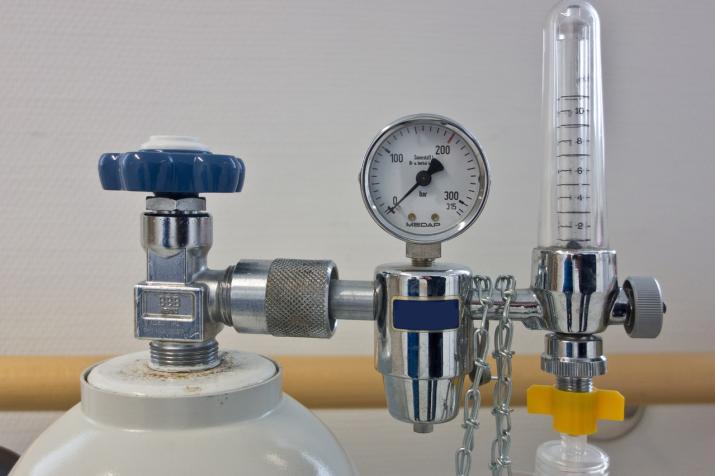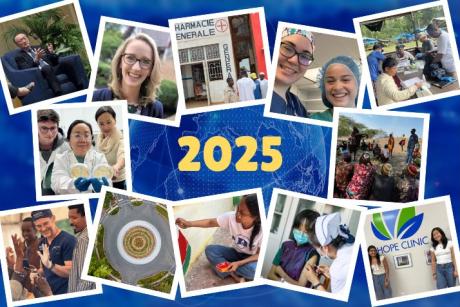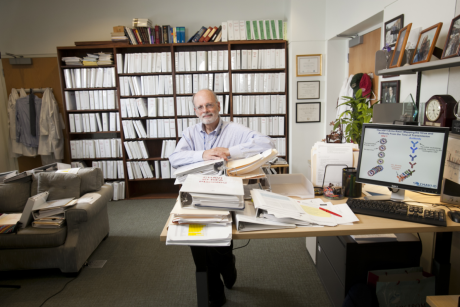
Medical oxygen is now considered an essential life-saving medicine by the World Health Organization. Photo source: Pixabay
Published February 12, 2024 under Research News
In the early days of the COVID-19 pandemic, some of the most dramatic images were connected to the life-preserving power of oxygen. With no other therapies available, patients infected with the novel coronavirus depended on medical oxygen to assist their struggling respiratory systems. And many hospitals didn’t have enough oxygen for all the patients who needed it.

But COVID-19 is far from the only respiratory illness that can cause low oxygen levels in the blood, known as hypoxemia. The condition can occur in patients with pneumonia, chronic obstructive pulmonary disease (COPD) and heart failure, among other illnesses. And even before the pandemic, too many of those patients were not receiving the oxygen they needed, especially in low-income countries.
One illustration of this gap comes from new research led by Neelima Navuluri, M.D., a pulmonologist with Duke Health and an assistant professor with the Duke Global Health Institute. In a study published recently in the British Medical Journal, Navuluri found that nearly 1 in 4 patients seen at a major Kenyan hospital had low blood oxygen levels when they were admitted, a rate that was consistent before and during the pandemic. Hypoxemia was not resolved in more than half of those patients, and 31 percent died in the hospital, according to the research.
Those findings point to a number of complex issues related to the use of medical oxygen, Navuluri says. Many hospitals in low-resource countries don’t have the equipment to provide oxygen treatments, and patients often can’t afford or may not understand the importance of oxygen treatment.
But medical providers also don’t always recognize hypoxemia – which is not an illness, but a condition of the body that accompanies other diseases – or act quickly enough to treat it.
“This speaks to the need for us to identify patients who are most at risk early enough,” she says. “Are they getting the oxygen they need from a policy and health system standpoint? Are healthcare providers well-versed in using and prescribing it?”
In May 2023, the World Health Organization (WHO) classified oxygen as a life-saving essential medicine, signaling the growing recognition of its importance. But Navuluri hopes her research can help drive continued efforts to expand access and use, not only at the country and system levels, but among medical providers and patients.
“Data to support the need for oxygen and its lack of availability or access can change policy and health systems,” she says. “That’s the level of engagement we need to come up with effective strategies to address this huge issue.”
The study examined records of 4,000 adult patients seen at Moi Teaching Referral Hospital in Eldoret, Kenya, between 2019 and 2022. One in 12 of the patients diagnosed with low blood oxygen levels were determined to be chronically hypoxemic.
Navuluri began focusing on oxygen after spending time as a resident in the intensive care and pulmonary units at a hospital in Kampala, Uganda. Some of the patients she saw had blood oxygen levels between 60 and 70 percent, well below the threshold of 97 percent that the WHO defines as “normal.” The hospital had only a few oxygen tanks and no built-in oxygen lines to treat multiple patients at the same time.
“Your organs and tissues need oxygen to function,” she says. “All aspects of your body need oxygen.”
Some studies have noted a higher prevalence of hypoxemia in sub-Saharan Africa. Navuluri is exploring why that may be, including the higher rates of diseases such as tuberculosis, which causes scarring in the lungs. Her team is also assessing the impact of indoor air pollution from cooking stoves on chronic lung disease. Navuluri’s study in Kenya found higher rates of hypoxemia in women than in men, which could be attributed to differences in indoor air pollution exposure.
Navuluri notes hypoxemia isn’t an issue unique to any one country or region. She is advising the Lancet Global Health Commission on Medical Oxygen Security, which was launched in 2022 to address the gaps in medical oxygen delivery systems. The commission has also reported 7 million children suffer from hypoxeamic pneumonia, but only one in five receive medical oxygen therapy.
“We need to come up with strategies to fix this and have a major impact on the lives of people,” she says. “That’s something we’re looking to accomplish.”


